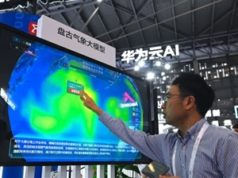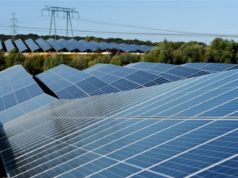Microsoft and its partners are betting that the cloud can help modernize electrical grids and hasten the spread of renewable energy.
Microsoft is already a big proponent of supplying its own cloud data centers with clean power. Now the Redmond, Wash., software giant believes it can use its cloud to help make renewable energy not only an integral part of a community’s energy mix, but perhaps the preferred one.
On Oct. 6, the company announced two new partnerships, including one that may one day set the stage for smart grids that can effortlessly incorporate a wide variety of energy sources.
Microsoft is kicking off with Agder Energi, a Norwegian renewable energy producer, and Powel AS, a provider of software solutions for utilities, a pilot program that uses the Azure cloud computing platform, Power BI and Azure IoT Hub. Together, the firms will develop tools that will enable Agder Energi to better accommodate distributed energy systems.
“Renewable energy resources and advancements in intelligent cloud technology are driving a digital transformation of grid operations to explore new business models,” said Kevin Dallas, corporate vice president at Microsoft IoT Business Development, in a statement. “Enabling solutions like Agder’s will accelerate widespread renewable and distributed power generation. It’s a bright future for the utility industry and for a sustainable world.”
Based on the results of the collaboration, their efforts may lead to systems that can predict demand and automatically balance the grid in near real time. The pilot will be deployed at an Agder Energi substation, which occasionally spikes to 120 percent of its capacity.
Also on Oct. 6, Microsoft announced it has teamed with Advanced Energy Economy (AEE), a trade association that advocates renewable energy, to create a predictive policy tool that lends transparency to regulatory proceedings involving energy issues. Microsoft is an AEE member, along with a who’s who of the tech industry, including Amazon, Apple, Facebook, Intel and Oracle.
The tool will be powered, in part, by Azure’s machine learning capabilities and AEE’s online bill-tracking platform called PowerSuite. The goal is to provide users will new insights into a bill as it wends its way through the legislative process, allowing them to adjust their strategies and level the playing field for advanced energy upstarts.
“We believe technology can play an important role in accelerating access to renewable energy,” said Rob Bernard, chief environmental strategist at Microsoft, in a separate statement. “Tools like PowerSuite provide valuable information and insights that are necessary to advance public policy that expands access to, and the affordability of, advanced energy.”
This summer, Microsoft announced a partnership with The University of Texas at San Antonio’s (UTSA) Texas Sustainable Energy Research Institute to study flow battery energy storage technology that may help grid operators better cope with increased renewable energy generation. Early research to determine if it works at scale and provides an economic benefit is promising, according to the UTSA.
“With more than 100 datacenters in more than 40 countries around the world, energy matters a lot to Microsoft,” remarked Jim Hanna, director for Datacenter Sustainability at Microsoft, in an Aug. 15 announcement. He added that the initiative showed “great promise in identifying and refining technologies that can reduce energy consumption and improve efficiency within our datacenters, while also contributing to a more reliable and sustainable grid.”







